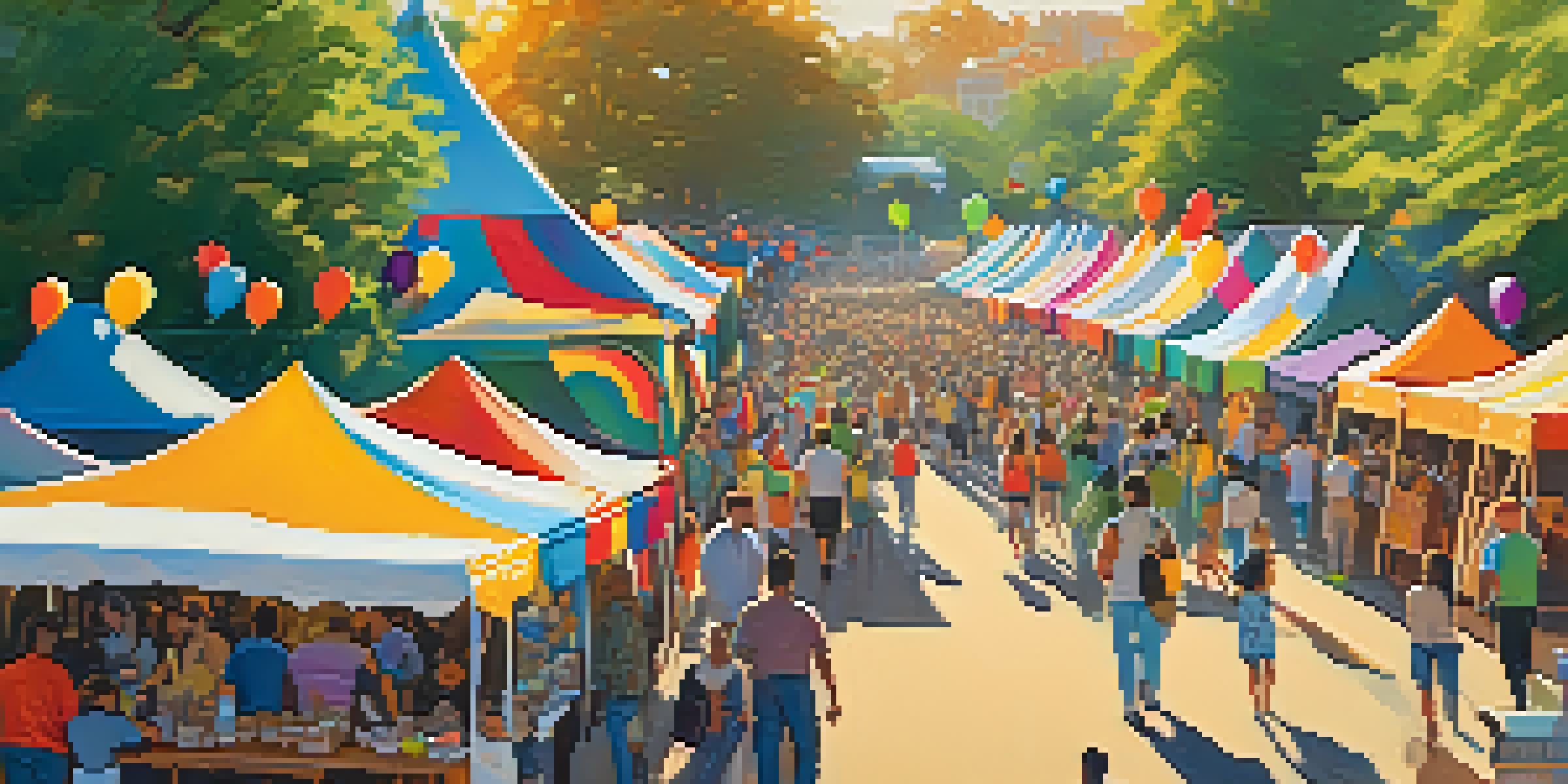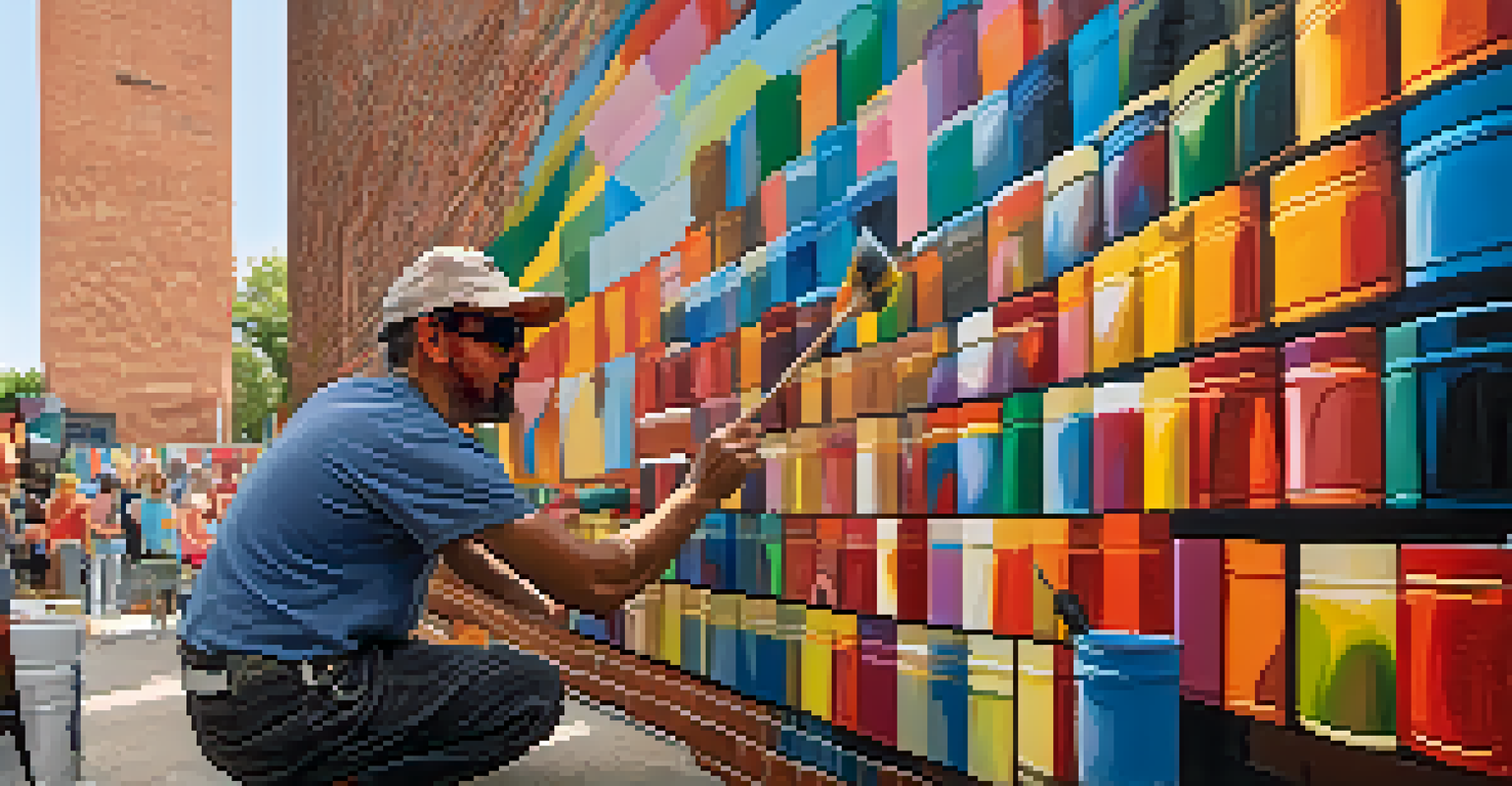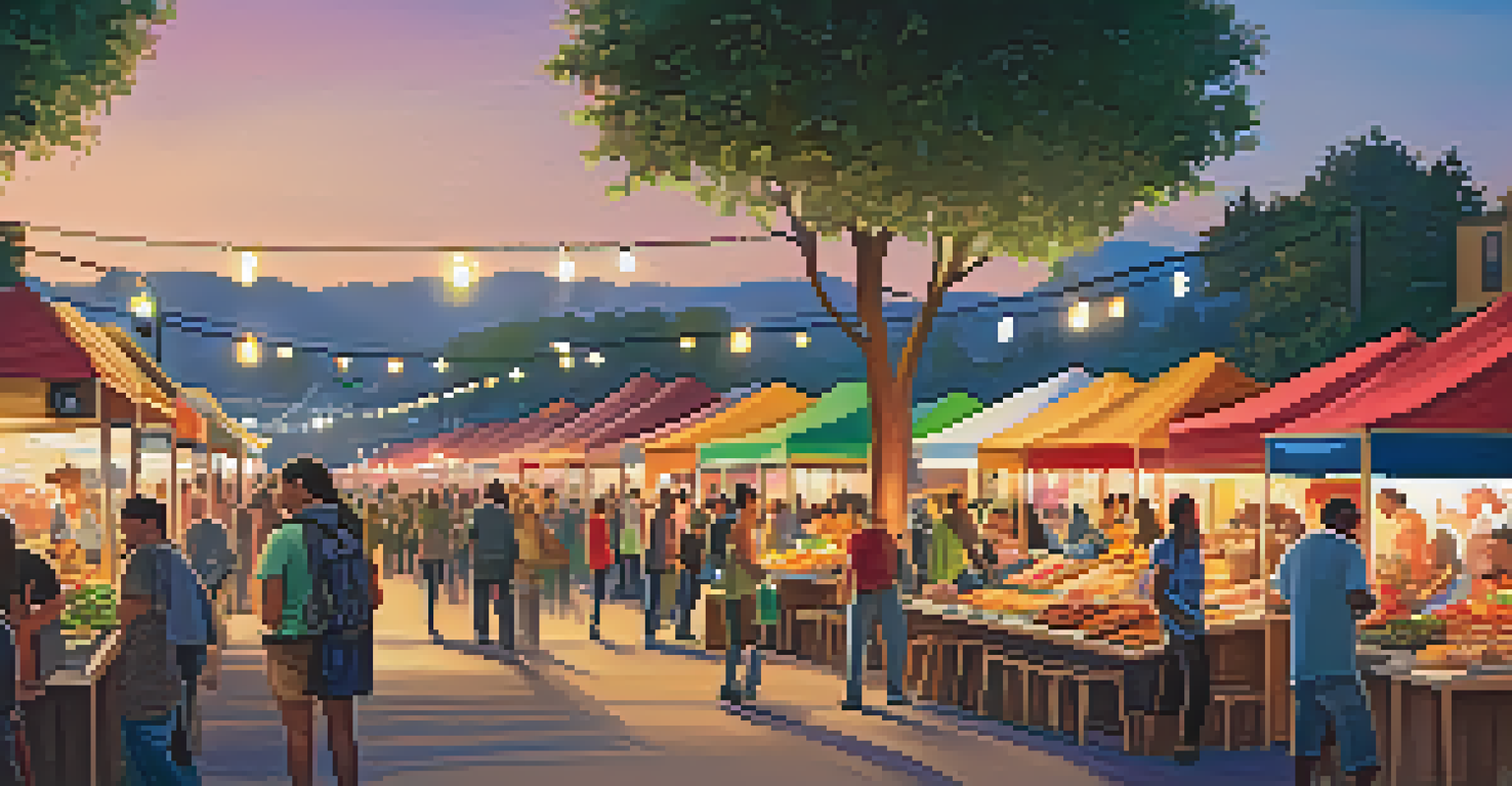The Impact of Art Festivals on Local Economies and Tourism

Art Festivals as Economic Catalysts for Communities
Art festivals serve as a powerful economic catalyst for local communities, often leading to increased revenue from various sources. When artists and visitors converge in a town, local businesses—from restaurants to hotels—experience a surge in demand, which can lead to higher profits. This boost in economic activity often encourages local governments to invest further in community development, creating a positive cycle of growth.
Art is not a thing; it is a way.
For example, a small town that hosts an annual arts festival may see a dramatic increase in foot traffic, which directly benefits shops and eateries. The festival can also create temporary employment opportunities, as local businesses hire extra staff to accommodate the influx of visitors. Thus, art festivals not only generate immediate financial gains but also foster long-term economic stability for the region.
Moreover, the increased visibility from hosting such events can attract future investments, making the community more appealing to potential businesses and residents. When people see a vibrant festival atmosphere, they may be more inclined to explore longer-term opportunities in the area, thus further solidifying the festival's positive impact on the local economy.
The Role of Tourism in Art Festivals
Tourism plays a crucial role in the success of art festivals, transforming them into significant attractions that draw visitors from far and wide. Travelers often plan trips around these events, leading to increased hotel bookings, restaurant visits, and local tourism activities. This influx of visitors not only enhances the festival experience but also strengthens the overall tourism profile of the host community.

For instance, a city known for its annual art festival may find that visitors return year after year, creating a loyal base of tourists who explore other local attractions during their stay. This kind of repeat visitation helps build a strong tourism economy, where festivals become a staple in the community’s identity. The more tourists that come, the more the local culture and arts scene can thrive.
Art Festivals Boost Local Economies
Art festivals increase revenue for local businesses, create temporary jobs, and encourage further community investment.
Additionally, festivals often feature local artists, craftspeople, and food vendors, giving visitors a taste of the region's unique culture. This cultural exchange not only enriches the visitor experience but also promotes local artisans, creating a win-win situation for both tourists and the community.
Enhancing Community Identity Through Art Festivals
Art festivals can significantly enhance a community's identity and sense of pride, showcasing local talent and creativity. When residents come together to celebrate art and culture, it fosters a deeper connection among community members. This collective experience can lead to stronger social ties and a greater sense of belonging, which is invaluable for local morale.
Creativity takes courage.
Take, for example, a town that has struggled economically but hosts a vibrant art festival each year. The event not only attracts visitors but also encourages local artists to showcase their work, turning the town into a vibrant hub of creativity. As residents engage with the festival, they often find renewed appreciation for their community’s unique attributes, reinforcing their identity.
Furthermore, art festivals can serve as a platform for addressing local issues and bringing awareness to community causes. By incorporating themes that resonate with residents, these events can become a powerful voice for change and unity, highlighting the importance of local culture and heritage.
Sustainability Practices in Art Festivals
In recent years, many art festivals have begun to prioritize sustainability, recognizing their potential impact on the environment. This shift towards eco-friendly practices not only aligns with a growing global consciousness but also appeals to environmentally aware visitors. From using biodegradable materials to encouraging public transportation, festivals are becoming more responsible stewards of their communities.
For instance, some festivals have implemented waste reduction programs, encouraging attendees to recycle and compost while providing clear guidelines on how to do so. This not only reduces the environmental footprint of the event but also educates attendees about sustainable practices. The commitment to sustainability can even become a unique selling point, attracting eco-conscious visitors.
Tourism Drives Festival Success
Art festivals attract tourists, enhancing local culture and creating a loyal visitor base that supports the community.
Additionally, these practices foster a sense of responsibility among participants and attendees, reminding everyone that art and culture can coexist harmoniously with nature. By leading by example, art festivals can inspire other local events to adopt similar sustainable practices, creating a ripple effect of positive change.
Challenges Faced by Art Festivals
While art festivals can have a remarkable impact on local economies, they also face a variety of challenges that can hinder their success. Weather conditions, for instance, can drastically affect attendance and participation, often leading to unforeseen logistical issues. Organizers must prepare for these uncertainties to ensure a smooth experience for both artists and attendees.
Financial constraints can also pose a significant challenge, as securing funding for festivals is often a complex and competitive process. Many art festivals rely on sponsorships and grants, and without these financial lifelines, they may struggle to provide the same level of programming and attractions. This can lead to tough decisions about scaling back or even canceling events altogether.
Moreover, maintaining community interest and engagement can be a continuous challenge. As trends shift and new forms of entertainment emerge, festivals must innovate to keep their offerings fresh and relevant. This can require a delicate balance between honoring tradition and embracing new ideas, which is essential for sustaining long-term support from the community.
Measuring the Economic Impact of Art Festivals
Measuring the economic impact of art festivals can be complex, as it involves various metrics and data points. Organizers often look at direct spending by visitors, such as accommodation, food, and merchandise, to gauge the financial benefits. However, understanding the broader impact on job creation and local business growth can provide an even clearer picture of a festival's value.
To accurately assess these impacts, many festivals conduct surveys and studies that analyze visitor demographics and spending habits. This data can reveal patterns and trends that help organizers plan future events and attract sponsors. For example, if a festival discovers that a significant portion of attendees are traveling from out of state, they may enhance marketing efforts to target similar visitors in the future.
Sustainability is Key for Festivals
Many art festivals are adopting eco-friendly practices, appealing to environmentally conscious visitors while promoting responsible event management.
Furthermore, local governments may use this data to make informed decisions about funding and support for future festivals. By demonstrating the economic benefits of these events, communities can advocate for continued investment in the arts, ensuring that art festivals remain a vital part of the local economy.
Future Trends in Art Festivals and Local Economies
As we look to the future, art festivals are likely to evolve in response to changing cultural landscapes and economic challenges. An increasing emphasis on inclusivity and diversity is expected to shape festival programming, ensuring that a wider array of voices and artistic expressions are represented. This shift not only enriches the festival experience but also reflects the diverse communities hosting these events.
Technology will also play an integral role in the evolution of art festivals. From virtual reality experiences to online ticketing and social media engagement, festivals are harnessing technology to reach broader audiences. This can result in hybrid events that blend in-person and virtual experiences, making art accessible to those who may not be able to attend physically.

Finally, the ongoing commitment to sustainability will continue to influence how festivals are organized and marketed. As communities become more eco-conscious, festivals that prioritize environmental responsibility are likely to attract more attendees and sponsors who value green initiatives. This focus on sustainability will not only enhance the festival experience but also contribute to the long-term health of local economies.